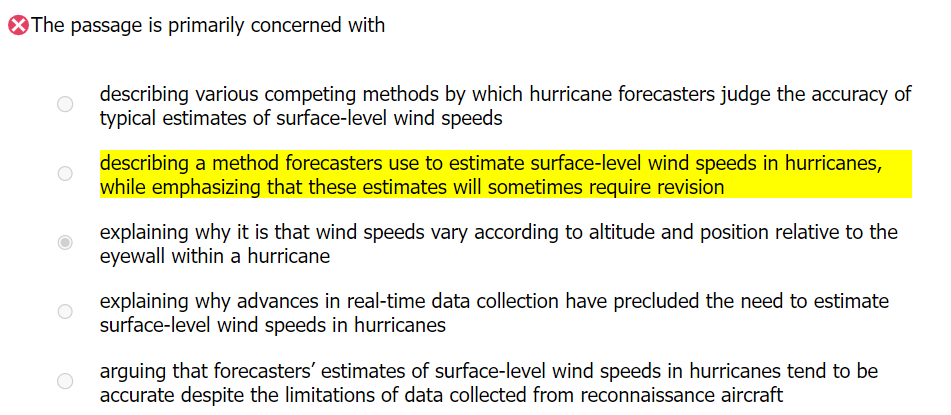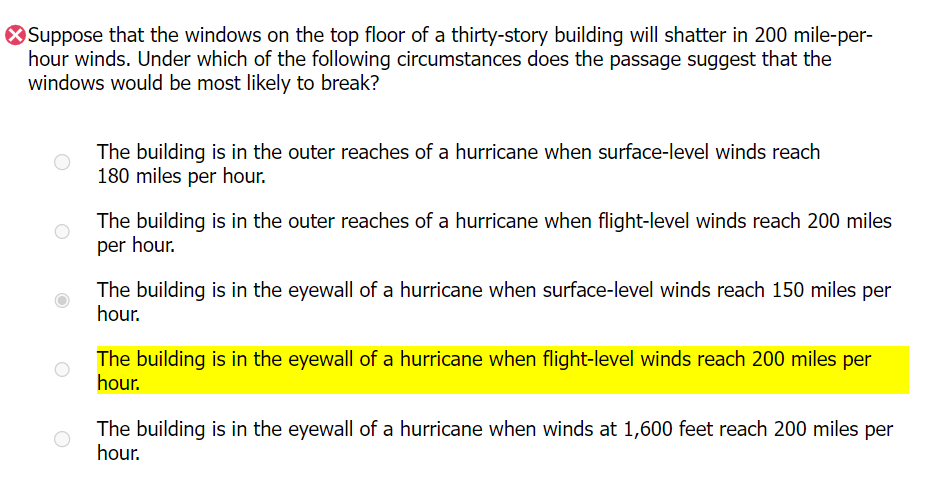Events & Promotions
|
|

GMAT Club Daily Prep
Thank you for using the timer - this advanced tool can estimate your performance and suggest more practice questions. We have subscribed you to Daily Prep Questions via email.
Customized
for You
Track
Your Progress
Practice
Pays
Not interested in getting valuable practice questions and articles delivered to your email? No problem, unsubscribe here.
- Nov 20
07:30 AM PST
-08:30 AM PST
Learn what truly sets the UC Riverside MBA apart and how it helps in your professional growth - Nov 20
01:30 PM EST
-02:30 PM IST
Learn how Kamakshi achieved a GMAT 675 with an impressive 96th %ile in Data Insights. Discover the unique methods and exam strategies that helped her excel in DI along with other sections for a balanced and high score. - Nov 19
12:30 PM EST
-01:30 PM EST
Learn how Keshav, a Chartered Accountant, scored an impressive 705 on GMAT in just 30 days with GMATWhiz's expert guidance. In this video, he shares preparation tips and strategies that worked for him, including the mock, time management, and more - Nov 22
11:00 AM IST
-01:00 PM IST
Do RC/MSR passages scare you? e-GMAT is conducting a masterclass to help you learn – Learn effective reading strategies Tackle difficult RC & MSR with confidence Excel in timed test environment - Nov 23
11:00 AM IST
-01:00 PM IST
Attend this free GMAT Algebra Webinar and learn how to master the most challenging Inequalities and Absolute Value problems with ease. - Nov 24
07:00 PM PST
-08:00 PM PST
Full-length FE mock with insightful analytics, weakness diagnosis, and video explanations! - Nov 25
10:00 AM EST
-11:00 AM EST
Prefer video-based learning? The Target Test Prep OnDemand course is a one-of-a-kind video masterclass featuring 400 hours of lecture-style teaching by Scott Woodbury-Stewart, founder of Target Test Prep and one of the most accomplished GMAT instructors.
Kudos
Bookmarks
Question 1
D
Be sure to select an answer first to save it in the Error Log before revealing the correct answer (OA)!
Difficulty:
 85%
(hard)
85%
(hard)
Question Stats:
43% (03:05) correct 57%
(03:20) wrong
57%
(03:20) wrong  based on 962
sessions
based on 962
sessions
History
Date
Time
Result
Not Attempted Yet
Question 2
B
Be sure to select an answer first to save it in the Error Log before revealing the correct answer (OA)!
Difficulty:
 5%
(low)
5%
(low)
Question Stats:
90% (00:46) correct 10%
(01:01) wrong
10%
(01:01) wrong  based on 862
sessions
based on 862
sessions
History
Date
Time
Result
Not Attempted Yet
Question 3
D
Be sure to select an answer first to save it in the Error Log before revealing the correct answer (OA)!
Difficulty:
 95%
(hard)
95%
(hard)
Question Stats:
38% (01:59) correct 62%
(01:51) wrong
62%
(01:51) wrong  based on 824
sessions
based on 824
sessions
History
Date
Time
Result
Not Attempted Yet

GMAT-Club-Forum-qjtp0dxf.png [ 129.52 KiB | Viewed 3571 times ]

GMAT-Club-Forum-twqazu4v.png [ 49.96 KiB | Viewed 3567 times ]

GMAT-Club-Forum-4kcfeang.png [ 73.93 KiB | Viewed 3580 times ]

GMAT-Club-Forum-tkylovec.png [ 71.14 KiB | Viewed 3567 times ]
Hurricane forecasters have difficulty determining maximum sustained surface-level winds. Reconnaissance aircraft usually obtain data from a flight level of 10,000 feet. However, in 1997, reconnaissance aircraft began deploying dropwindsondes in hurricanes. These weather instruments, carrying global positioning systems and affixed to parachutes, acquire detailed data from flight level down to surface level. Near the eyewall—the ring of towering thunderstorms surrounding a hurricane's eye—the strongest winds are usually found at around 1,600 feet, about 20 percent stronger than at flight level. In the hurricanes' outer reaches, however, wind maximums are typically found at higher elevations. The data also show that, near the eyewall, winds on top of a thirty-story building average about twenty miles per hour stronger than at ground level. Given the collective dropwindsonde data, forecasters typically estimate eyewall surface-level winds at about 90 percent of flight-level winds, with surface-level winds in the outer reaches at about 78 percent.
Hurricane Mitch in 1998, however, exhibited maximum flight-level winds no stronger than 150 miles per hour, yet dropwindsondes indicated much stronger surface-level winds. In this case, Mitch appeared to be weakening from the top down; the circulation at flight levels was decreasing but had yet to decrease at surface levels. This storm is a reminder that the typical estimates often need modification based on certain real-time factors, especially convective (warm-air updraft) intensity and sea-surface temperature.
Hurricane Mitch in 1998, however, exhibited maximum flight-level winds no stronger than 150 miles per hour, yet dropwindsondes indicated much stronger surface-level winds. In this case, Mitch appeared to be weakening from the top down; the circulation at flight levels was decreasing but had yet to decrease at surface levels. This storm is a reminder that the typical estimates often need modification based on certain real-time factors, especially convective (warm-air updraft) intensity and sea-surface temperature.
1. The passage most strongly suggests that circulation in hurricanes
A. weakens at the eyewall before it begins to weaken in the outer reaches of a storm
B. near the outer reaches is typically strongest at elevations above the usual flight level of reconnaissance aircraft
C. is typically the same from flight level down to surface level before the hurricane begins to weaken
D. is usually faster at flight level than it is at surface level after a storm has begun to weaken
E. will not increase if sea-surface temperatures remain constant
A. weakens at the eyewall before it begins to weaken in the outer reaches of a storm
B. near the outer reaches is typically strongest at elevations above the usual flight level of reconnaissance aircraft
C. is typically the same from flight level down to surface level before the hurricane begins to weaken
D. is usually faster at flight level than it is at surface level after a storm has begun to weaken
E. will not increase if sea-surface temperatures remain constant
2. The passage is primarily concerned with
A. describing various competing methods by which hurricane forecasters judge the accuracy of typical estimates of surface-level wind speeds
B. describing a method forecasters use to estimate surface-level wind speeds in hurricanes, while emphasizing that these estimates will sometimes require revision
C. explaining why it is that wind speeds vary according to altitude and position relative to the eyewall within a hurricane
D. explaining why advances in real-time data collection have precluded the need to estimate surface-level wind speeds in hurricanes
E. arguing that forecasters' estimates of surface-level wind speeds in hurricanes tend to be accurate despite the limitations of data collected from reconnaissance aircraft
A. describing various competing methods by which hurricane forecasters judge the accuracy of typical estimates of surface-level wind speeds
B. describing a method forecasters use to estimate surface-level wind speeds in hurricanes, while emphasizing that these estimates will sometimes require revision
C. explaining why it is that wind speeds vary according to altitude and position relative to the eyewall within a hurricane
D. explaining why advances in real-time data collection have precluded the need to estimate surface-level wind speeds in hurricanes
E. arguing that forecasters' estimates of surface-level wind speeds in hurricanes tend to be accurate despite the limitations of data collected from reconnaissance aircraft
3. Suppose that the windows on the top floor of a thirty-story building will shatter in 200 mile-per- hour winds. Under which of the following circumstances does the passage suggest that the windows would be most likely to break?
A. The building is in the outer reaches of a hurricane when surface-level winds reach 180 miles per hour.
B. The building is in the outer reaches of a hurricane when flight-level winds reach 200 miles per hour.
C. The building is in the eyewall of a hurricane when surface-level winds reach 150 miles per hour.
D. The building is in the eyewall of a hurricane when flight-level winds reach 200 miles per hour.
E. The building is in the eyewall of a hurricane when winds at 1,600 feet reach 200 miles per hour.
A. The building is in the outer reaches of a hurricane when surface-level winds reach 180 miles per hour.
B. The building is in the outer reaches of a hurricane when flight-level winds reach 200 miles per hour.
C. The building is in the eyewall of a hurricane when surface-level winds reach 150 miles per hour.
D. The building is in the eyewall of a hurricane when flight-level winds reach 200 miles per hour.
E. The building is in the eyewall of a hurricane when winds at 1,600 feet reach 200 miles per hour.
Attachment:
GMAT-Club-Forum-qjtp0dxf.png [ 129.52 KiB | Viewed 3571 times ]
Attachment:
GMAT-Club-Forum-twqazu4v.png [ 49.96 KiB | Viewed 3567 times ]
Attachment:
GMAT-Club-Forum-4kcfeang.png [ 73.93 KiB | Viewed 3580 times ]
Attachment:
GMAT-Club-Forum-tkylovec.png [ 71.14 KiB | Viewed 3567 times ]
Kudos
Bookmarks
Is the answer to Q1 "D" because of the first and second lines in the last paragraph?
It's suggested that Mitch is a bit of an anomaly - it had stronger winds at the surface-level vs flight-level b/c it was weakening from top to bottom? So it's implied that ("ordinarily") when these hurricanes weaken, circulation is usually faster at flight level than at surface level after a storm starts to weaken?
It's suggested that Mitch is a bit of an anomaly - it had stronger winds at the surface-level vs flight-level b/c it was weakening from top to bottom? So it's implied that ("ordinarily") when these hurricanes weaken, circulation is usually faster at flight level than at surface level after a storm starts to weaken?
















